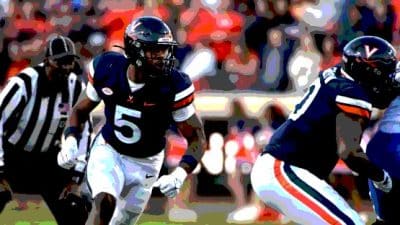Golf Things Considered column by John Rogers
[email protected]
Golf, like life, has a lot to do with causal relationships.
Say what? Causal relationships.
Like when you tell your boss that you are late to work because your alarm did not go off. Of course, the direct cause for being late was that you overslept. Oversleeping was caused by the alarm failing to go off (and because you stayed up too late watching the Golf Channel). The alarm didn’t work because you forgot to pay the electric bill, which caused the electric company to cut off power to your house. So in a roundabout way, you were late for work because you forgot to pay the electric bill. Causal relationships.
The golf swing has a lot of little pieces that rely on each other, and when something goes wrong, there is usually a chain reaction. Usually one problem causes another.
What I have found over the years is that quite a few problems in the golf swing start with a club that goes too far to the inside on the backswing.
But let me back up. What is “the inside”? Imagine a line going from the ball to the intended target. That’s the target line. Now imagine the world divided into two halves by the target line. The side that you address the ball from is “the inside.” Everything on the other side of the target line is “the outside.”
Most of the shots we like in golf are generated when the club travels along and inside the target line. The dreaded slice tends to come when the club gets a little wayward, and comes into the ball from that dark region, the outside, where there is weeping and gnashing of teeth. Well, maybe it’s not that bad. But most of the shots we like – straight, or maybe a little right to left draw – happen when the club approaches the ball slightly from the inside, travels briefly down the line, and then returns to the inside, making a soft arc around the body.
But in golf, like in life, too much of a good thing is a bad thing. I frequently see a golfer get too handsy in the takeaway and flair the clubhead, meaning the clubhead goes too fast or too far to the inside. If he does not loop the club on the way down to get it back on a better path, the club will come into impact too much from the inside. This is only a good thing if he wants to hit a push to the right or a hard hook to the left (for a right-handed golfer).
This is where causal relationships come in. The handsy golfer will get tired of pushes and hooks, so he’ll start looping and rerouting the club in the downswing. But if he overcooks it a little, he might come from the outside now and hit a few pulls or slices. In other words, the flair in his backswing led to poor shots, which led to a compensation, which led to different poor shots.
Then there’s the unmentionable shot. You know, the S word, sometimes called a lateral pitchout, or a hosel rocket, or even “chili peppers” if you saw “Tin Cup.” Coming from the inside indirectly causes this shot, too. When the golfer tries to reroute the club on the way into the ball, it often requires extra effort from the trailing arm (the right arm for right-handed golfers). When this arm extends too early because of the effort, the club pushes out from the body, the neck of the club hits the ball, and voila – there goes a chili pepper screaming knee high at a right angle to the intended line. I know one guy who quit golf because he got into these shots so badly. I know another guy who probably should have quit.
So what is a golfer to do? The outside is bad. The inside is good, but only to a point. Then there are compensations and causal relationships, and the lurking threat of the unmentionable. Lions, and tigers and bears.
To fight off some bad habits, consider taking lessons. Have a pro help you with your swing plane and path. A good pro will not only see the direct reasons for your poor shots, but the underlying causes. Instead of blind experimentation at the range, groping for a cure (which will likely just be a compensation with a new set of problems), get the help of someone whose job it is to spend most of his life thinking about such things. In other words, someone without a life, like me. You might say I’m here to help you find your path.
So my advice is to get some lessons, avoid too much of an inside takeaway- – and don’t forget to pay the electric bill.










